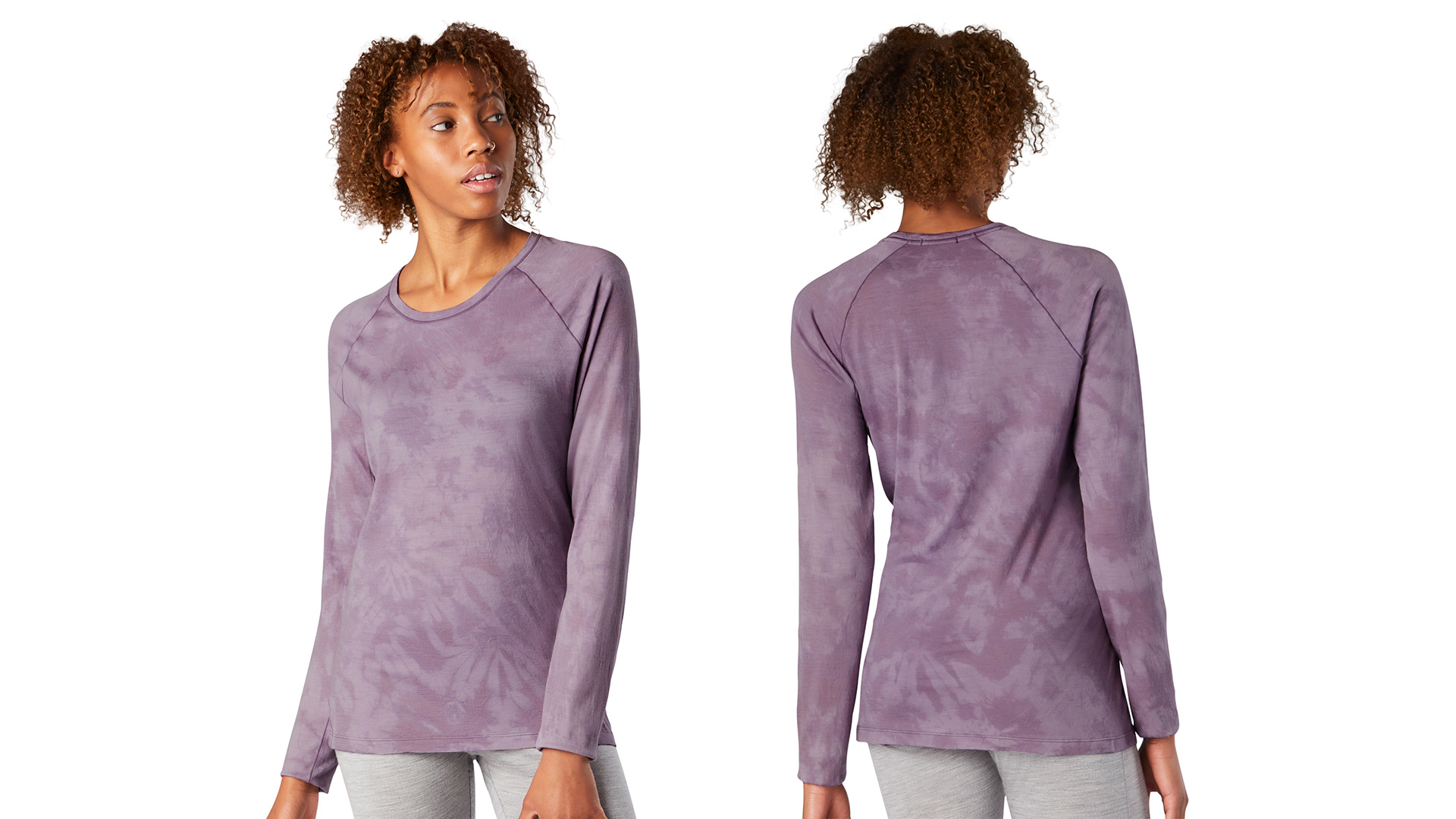Smartwool Merino 150 base layer review: well designed, but not the softest
Smartwool's Merino 150 base layer is designed to help keep you comfortable through all kinds of adventures. Here's our review

The Smartwool Merino 150 base layer is well designed with a good fit and thoughtful details, such as seams shaped to minimise chafing. While the fabric does a good job of regulating temperature, those with sensitive skin should beware its slightly scratchy texture.
-
+
Comfy fit with smooth seams
-
+
Regulates temperature well
-
+
Some colorways use plant-based dye
- +
-
-
Fabric slightly scratchy on sensitive skin
-
-
Smells a bit weird
Why you can trust T3

Like the socks this brand built its reputation on, the Smartwool Merino 150 base layer uses Merino wool – a material that's often used for outdoor apparel, being breathable yet warm, and naturally antibacterial. It's no surprise this fabric crops up repeatedly in our best base layers guide.
Merino 150 is Smartwool's lightest weight Merino jersey fabric, and designed for active wear. There are a few iterations of the Smartwool Merino 150 base layer to choose from. This review focuses mainly on the long-sleeved version, available in a men's and women's fit, with an RRP of RRP £74.99. I've also tried out the Merino 150 Baselayer Short sleeve – available for men and women, in a range of colours (both RRP £64.99).
So can the brand behind some of the very best hiking socks around, recreate its magic on this base layer? Read on for my full Smartwool Merino 150 base layer review.
Smartwool Merino 150 base layer review: fit and features
The Smartwool Merino 150 base layer is made from Merino fibers wrapped around a nylon core (87% Merino, 13% nylon). The Merino naturally retains heat, but is breathable to let sweat escape, while the nylon is designed to add durability and stretch. This fabric – Merino 150 – isn't super-thin (you won't have any issues with it going see-through), but is still light enough for warm weather wear. As is typically the case with base layers with a higher percentage of Merino wool as opposed to synthetic fibres, it's also on the pricier side.
I tested this base layer both on a sweaty hike and for hanging around the campsite, and on both occasions it did a good job of keeping me the right temperature, although on balance I'd probably pick it for winter rather than summer. My main complaint with this fabric is that I find it very slightly scratchy to wear – although I usually only really notice when I first put it on – and also that it has a slight smell to it that I'm not overly keen on.

Smartwool has adjusted the cut to offer improved comfort and range of movement. Raglan style sleeves mean the arm seam runs from your inner collarbone to your armpits, dodging the potential issue of traditional shoulder seams chafing when you add a heavy hiking backpack on top. The side seams also wrap round towards the front of the body. For extra confidence, the seams are flatlocked to give a smooth, secure join. Again, I had absolutely no issues with comfort on that front.
I found the fit on the women's version on the looser side for a base layer, and while there's enough stretch to allow a good range of movement, but the fabric isn't not particularly clingy. One pet peeve I have with base layers is if they come up short on the body, and ride up when you're moving around; I was pleased to find this one on the longer side.
The Smartwool Merino 150 base layer can be machine washed on a gentle, warm cycle, and you can iron it on cool (you won't need to iron it unless you're very particular, though). Finally, there's 'Core Spun technology', which I assume refers to the fact the Merino fibres are wrapped around a tougher nylon core, designed to make this base layer more durable. I've had this on test for a month or so, and haven't had any issues so far, although of course you'd hope it'd last much longer than that for the higher price tag.
Smartwool has made some efforts to keep things eco-friendly with this design. Select colourways are made using plant-based dye. For all tops, the Merino wool used is responsibly sourced.
Smartwool Merino 150 base layer review: verdict
There's plenty to like about the Smartwool Merino 150 base layer. The fit is well thought out and delivers a good range of movement, the flatlocked seams are cleverly positioned to remove the danger of chafing, and the Merino-based fabric delivers when it comes to temperature regulation. While Merino wool is always expensive, this is still priced on the high side, and I'd say perhaps slightly overpriced. My main issue are that I find the fabric very slightly itchy to wear, which would be enough to stop me reaching for one of these as my go-to base layer.
Sign up to the T3 newsletter for smarter living straight to your inbox
Get all the latest news, reviews, deals and buying guides on gorgeous tech, home and active products from the T3 experts
Ruth is a lifestyle journalist specialising in sleep and wellbeing. She has tested more mattresses than her small flat can handle and will talk at length about them to anyone who shows even a passing interest, and has had to implement a one-in-one-out pillow policy for fear of getting smothered in the night. As well as following all the industry trends and advancements in the mattress and bedding world, she regularly speaks to certified experts to delve into the science behind a great night's sleep, and offer you advice to help you get there. She's currently Sleep Editor on Tom's Guide and TechRadar, and prior to that ran the Outdoors and Wellness channels on T3 (now covered by Matt Kollat and Beth Girdler-Maslen respectively).
-
 Warning: Ciele’s refreshed Elite Collection may cause excessive garment envy on race day
Warning: Ciele’s refreshed Elite Collection may cause excessive garment envy on race dayFlex on your run crew with Ciele’s latest drop
By Matt Kollat Published
-
 Smeg adds a touch of navy sophistication to its iconic breakfast set
Smeg adds a touch of navy sophistication to its iconic breakfast setIt's a minimalist's dream
By Lizzie Wilmot Published
-
 My most anticipated Netflix movie of the year gets a wild new trailer
My most anticipated Netflix movie of the year gets a wild new trailerHavoc looks pretty unbelievable
By Max Freeman-Mills Published